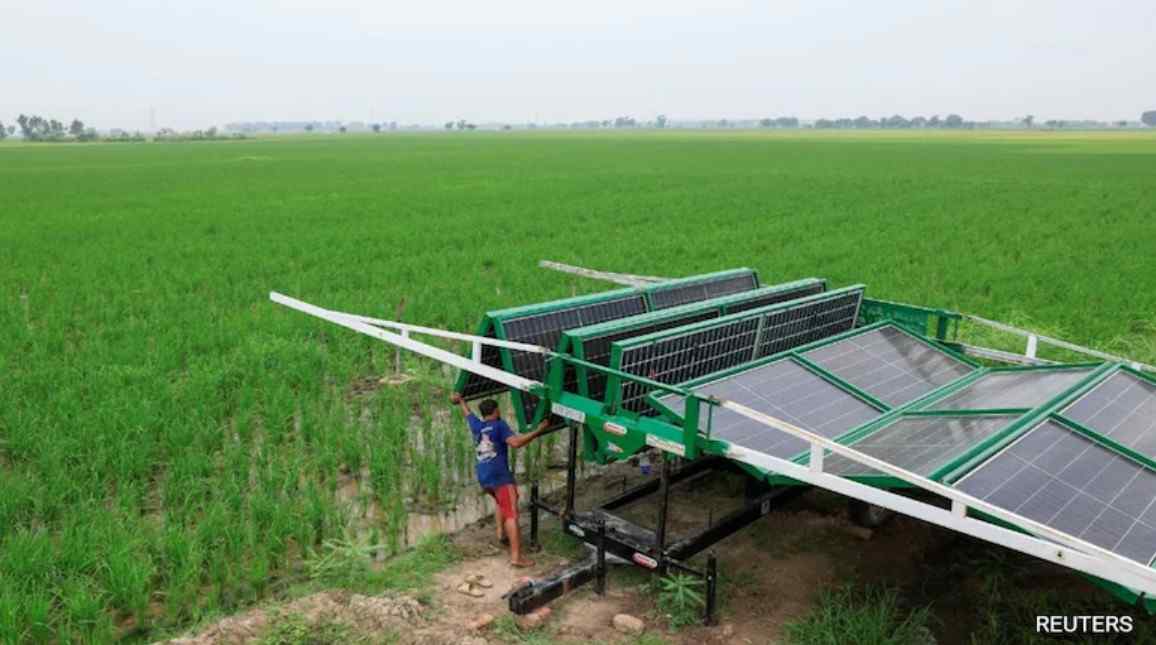Clean energy is transforming agriculture — but it’s also fueling dangerous groundwater depletion across Pakistan’s most fertile lands.
A Green Revolution With a Hidden Cost
Pakistan is in the middle of a solar-powered farming revolution. Thousands of farmers, struggling with rising diesel prices and an unreliable electricity grid, have turned to solar energy to power their tube wells. The shift has been rapid, cost-effective, and environmentally friendly — on the surface.
But underneath that success lies a brewing environmental crisis: groundwater reserves are vanishing, especially in Pakistan’s most critical agricultural regions.
How Farmers Are Using Solar to Transform Irrigation
Karamat Ali, a 61-year-old rice farmer, once relied on livestock and expensive diesel to sustain his farm. Earlier this year, he sold part of his herd to buy solar panels and install a motorized tube well, freeing him from fuel costs and erratic power cuts.
“Water supply to my paddy field is smoother than before,” he said.
Ali’s story reflects a national trend: more farmers now irrigate their crops more frequently — even several times a day — thanks to solar-powered pumps.
he Scale of Pakistan’s Solar Shift
Based on government data and energy expert analysis:
- 650,000 solar-powered tube wells are now estimated to be operating in Pakistan.
- 400,000 have shifted from the electricity grid
- 250,000 are newly installed since 2023
- Agricultural electricity consumption has dropped by 45% since the solar boom began
- The area used for growing water-intensive rice has increased by 30% (2023–2025)
- Land under less thirsty crops like maize has dropped by 10%
This shift has been fueled by:
- Rising power tariffs after IMF-led reforms
- An 80% drop in global solar panel prices since 2017, driven by Chinese production
Groundwater Is Disappearing Fast
According to internal water authority documents:
- The water table has dropped below 60 feet (critical level) in 6.6% of key agricultural areas
- The most depleted areas — with levels beyond 80 feet — have doubled in size since 2020
- Groundwater availability is shrinking by 25% in high-risk zones (2020–2024)
“There is no method to the madness,” said Imran Saqib Khalid, an independent environmental scientist. “Without regulation, groundwater depletion will continue unchecked.”
Why Farmers Can’t Afford to Stop
Despite the long-term risks, farmers see solar as a lifeline. Years of falling wheat prices, rising energy bills, and deepening rural poverty have pushed them toward any solution that lowers costs.
For many:
- Solar pumps save millions of rupees in fuel and electricity
- Yields have increased modestly, while crop quality has improved
- Communities share, rent, or co-own panels to make them affordable
“Solar panels should be installed at all costs,” said Rai Abdul Ghafoor, a subsistence farmer still saving for a system.
Official Response: Denial and Delay
Pakistan’s power minister, Awais Leghari, told Reuters in June that the idea that solar pumps are depleting water is a “misconception.”
“The land under cultivation hasn’t increased. They’re just replacing expensive diesel with solar,” he argued.
But when presented with farmer testimonies and cultivation data, officials gave no response.
Meanwhile, Punjab’s irrigation minister admitted the obvious:
“Solarization is good for the environment because it’s clean energy — but it is also impacting our water table.”
Government Begins Slow Efforts to Recharge Aquifers
Facing international pressure — especially after India suspended the Indus Waters Treaty — Pakistani authorities have started aquifer recharge pilot projects at 40+ sites.
Other efforts include:
- Reviving colonial-era irrigation infrastructure like the Ravi Siphon
- Monitoring local rainfall and flooding to recharge groundwater
- Testing new irrigation practices to reduce extraction needs
But experts warn: these actions are piecemeal and underfunded, given the scale of the crisis.
What’s at Stake: Food Security and Future Cropping
Without urgent action:
- Groundwater may reach irreversible lows
- Cropping patterns will shift, reducing food output
- Food security risks will grow for an already fragile economy
“In the long run, this will have an impact on the types of crops we can grow,” said Khalid. “It’s a food security issue, not just an environmental one.”
Key Takeaways
- Solar energy is helping farmers save money and increase efficiency
- But unrestricted use of solar pumps is rapidly depleting groundwater
- Water tables in critical zones have dropped below sustainable levels
- Farmers, driven by economic desperation, continue over-irrigating
- Without regulation and real-time water monitoring, the crisis will worsen



